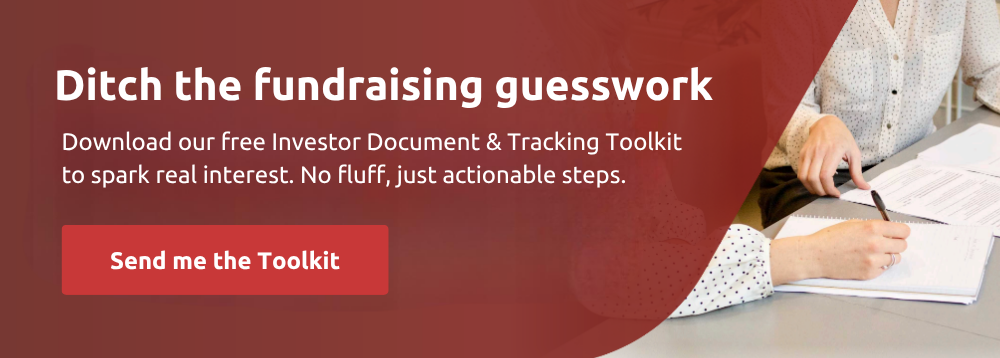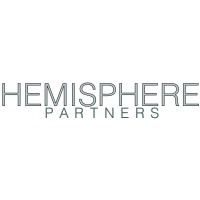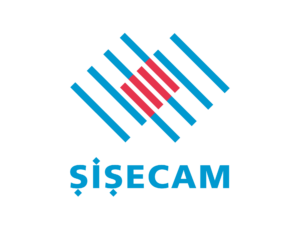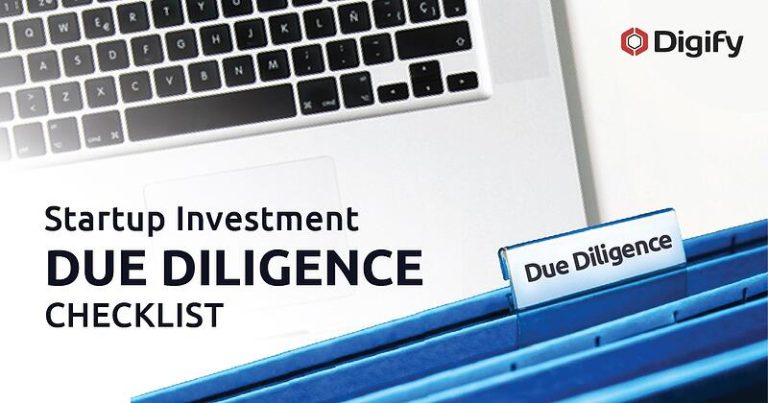This article is part of The Complete Guide to Raising Funds from LPs. The guide covers everything from defining your investment thesis and building strategic fundraising plans to mastering investor due diligence and navigating emerging trends like AI and ESG integration.
Each chapter builds on the previous ones to give you a complete fundraising playbook. While the article below is very informative, you’ll get the most value by reading the entire guide to see how you can fast-track your fundraising process.
Building on the strategic role of data rooms outlined in Chapter 2 of the guide, this chapter provides comprehensive implementation guidance on how modern data rooms and associated digital tools can be strategically deployed to streamline your fundraising process, enhance investor experience, and ultimately accelerate your path to closing. We’ll explore the technical foundations of these platforms, security considerations, tips on structuring data rooms and how you can read engagement signals to take strategic actions to boost your chances of success.
Understanding Virtual Data Rooms: Beyond Document Storage
The concept of a data room has evolved dramatically over the past two decades. Traditionally, physical data rooms served as secure locations where sensitive corporate documents were made available for review during transactions. These physical spaces required significant administrative overhead, imposed geographical limitations, and created bottlenecks in the due diligence process.
Virtual data rooms (VDRs) emerged as the digital evolution of this concept, offering secure online repositories for storing and sharing sensitive documents. The market for these specialized platforms continues to grow rapidly, with the global virtual data room market valued at $2.42 billion in 2024 and projected to grow at a compound annual growth rate of 22.2% from 2025 to 2030.
This growth reflects not merely technological advancement but a fundamental shift in how private capital transactions are conducted. Today’s virtual data rooms have evolved from basic document repositories into sophisticated platforms that support the entire fundraising lifecycle from initial engagement through closing and beyond.
Core Functionality for Fundraising
In the context of private capital fundraising, virtual data rooms serve multiple critical functions that extend well beyond simple document storage:
First, data rooms provide a secure, centralized location for all fundraising materials. These platforms enable fundraising teams to “know when is the best time to follow up with instant notifications when investors access documents or data rooms for the first time. No more ‘checking-in’ with investors if they have viewed the documents or not.” This real-time visibility transforms how fundraising teams manage investor engagement.
Second, they enable controlled information sharing with potential investors. Modern data rooms allow you to tailor access permissions based on investor categories, fundraising stages, and specific documents, ensuring that the right information reaches the right investors at the right time.
Third, they support the due diligence process through organized document presentation and collaborative features. As Arjun Sharma, Vice President, Peak XV Partners, explains, “It provides insights into how a diligence process is operating. The integration (of VDR tools like Digify) with Gmail is also very useful to regularly send secure emails without leaving the gmail interface.”
Finally, they provide valuable analytics on investor engagement, offering insights into which materials are receiving attention and from whom. According to Cynthia Adams, CEO of Pearl Certification, VDRs help her “send important and private documents with potential investors in a way that (is) easy for them to access our information. Because I could see who had accessed our documents, it also provided me with some intel on level of interest and engagement.”
Essential Folder Structure for Private Capital Fundraising
While data room structures should be tailored to your specific strategy and investor profile, a standard organizational framework for private capital fundraising typically includes the following major sections:
Executive Overview Materials
This section includes high-level introductory materials that provide a comprehensive overview of your fund:
- Fund overview and investment strategy documents
- Executive summary and pitch deck
- Team biographies and organizational structure
- Track record overview and key performance metrics
- Market opportunity analysis
Legal and Fund Structure
This section houses the formal legal documentation for your fund:
- LPA and term sheet
- Formation documents and certificates
- Regulatory filings and registrations
- Service provider agreements
- Subscription documents and investor questionnaires
Track Record and Performance
This section provides detailed performance information and case studies:
- Portfolio performance data at both fund and investment levels
- Attribution analyses and benchmarking
- Detailed case studies of representative investments
- Valuation methodologies and reports
- Realized and unrealized return breakdowns
Due Diligence Materials
This section includes comprehensive information addressing typical investor due diligence questions:
- Investment process documentation
- Risk management framework and procedures
- Operational policies and compliance manuals
- ESG approach and implementation
- Business continuity and disaster recovery plans
Market and Strategy Analysis
This section provides deeper insights into your investment thesis and target markets:
- Detailed market research and industry analyses
- Competitive landscape assessment
- Deal sourcing strategy and pipeline
- Value creation approaches
- Exit strategy considerations
Finanzinformationen
This section contains financial projections and historical data:
- Fund-level financial models and projections
- Management fee and expense forecasts
- Carried interest and waterfall calculations
- Historical financial statements and audits
- Tax considerations and structures
Investor Relations and Updates
This section includes materials related to ongoing investor communications:
- Investor reporting samples and templates
- Advisory board information
- Annual meeting presentations and materials
- Portfolio company updates
- Capital call and distribution notices
This structure should be adapted to your specific strategy and investor profile, but maintaining a consistent organizational framework creates a professional, navigable experience for potential investors.
Key Security Considerations
For private capital fundraising, security is not merely a technical consideration but a fundamental requirement that directly impacts investor confidence. Several security elements are particularly important when evaluating virtual data room platforms:
- Encryption standards: These should include both data-at-rest and data-in-transit protection, typically using AES-256 bit encryption or equivalent technologies. This ensures that documents remain protected both when stored on servers and when being accessed by users.
- Access control systems: These offer granular permission settings that allow you to control exactly who can view, download, print, or share specific documents. According to Samuel Ramos-Jones, Director for Business Development for PSA Philippines Consultancy, VDRs allow them to “better distribute sensitive material to our clients and ensure proper access and distribution controls with great granularity.“
- Document protection features: Dynamic watermarking, which overlays identifying information on viewed or printed documents, and digital rights management (DRM) capabilities that can revoke access to previously downloaded files are increasingly standard in leading platforms. As Will Klippgen, Managing partner & Co-founder of Cocoon Capital, said, “We love that we can… send confidential presentations with preset timeouts… to give and to revoke access to individual documents as needed.” His colleague Lauren Teo added, “As a fund, we hold highly sensitive information – by securing these files… we can now hold and send these documents in confidence at a much lower risk.”
- Audit trails: These track all user activity within the data room to create accountability and provide valuable insights. These logs should capture who accessed which documents, when, for how long, and what actions they took (viewing, downloading, printing, etc.).
- Compliance certifications: SOC 2, ISO 27001, and GDPR compliance indicate that the platform has undergone rigorous security assessments and follows industry best practices for data protection.
When selecting a virtual data room, these security features should be evaluated not merely as technical capabilities but as strategic assets that build investor trust and protect your sensitive information throughout the fundraising process.
We love that we can… send confidential presentations with preset timeouts… to give and to revoke access to individual documents as needed.
Will Klippgen, Managing partner & Co-founder of Cocoon Capital Tweet
Strategically Structuring Your Data Room
The organizational structure of your data room directly impacts the investor experience and can significantly influence fundraising outcomes. A well-organized data room creates a professional impression and accelerates the due diligence process, while a poorly structured one can create frustration and undermine confidence.
Several core principles should guide your data room organization:
- Create a logical, intuitive hierarchy: Let the data room guide investors through your materials in a sensible sequence. This means implementing consistent naming conventions for both folders and documents to ensure easy navigation and searchability. This consistency should extend across all materials, creating a cohesive and professional experience.
- Give adequate context: Provide explanatory documents or overview files at each level of your folder structure. These guides help investors understand what information is contained in each section and why it’s relevant to their assessment.
- Balance comprehensiveness with clarity: Include all necessary information without creating information overload. This often means structuring supplementary or technical materials in separate sections to maintain focus on core investment considerations.
- Regularly update and maintain the data room: Ensure all information remains current and accurate. Outdated or inconsistent information creates confusion and undermines credibility with sophisticated investors.
Permission Structure and Progressive Disclosure
Effectively controlling access to your data room is as important as its content organization. A strategic approach to permissions implements the concept of progressive disclosure, revealing information based on investor interest level, stage in the fundraising process, and confidentiality considerations.
A typical progressive disclosure approach includes multiple access levels:
Level 1: Initial Marketing Materials
- Teaser or executive summary
- Anonymized or redacted track record
- Market overview
- Team background highlights
Level 2: Preliminary Due Diligence
- Full pitch deck
- Detailed investment strategy
- Attribution of track record
- Case studies with more detail
- Fund terms summary
Level 3: Advanced Due Diligence
- Legal documentation
- Detailed performance information
- Portfolio company details
- Reference contacts
- Operational documentation
Level 4: Final Due Diligence and Closing
- Full subscription documents
- Side letter templates
- Service provider agreements
- Regulatory filings
- Limited partner information
Each level should be granted based on explicit investor actions such as signing an NDA, submitting a formal indication of interest, initiating formal due diligence, or expressing commitment to invest. This measured approach balances transparency with appropriate protection of sensitive information.
Strategic Applications of Engagement Data
There is a lot you can do based on the insights and engagement signals gained from data room analytics to increase your chances in the fundraising process:
First, prioritize follow-up based on engagement levels. Investors demonstrating high engagement deserve prompt, personalized follow-up, while those showing minimal interaction might require re-engagement efforts or deprioritization. Here’s a handy guide to who on your team should follow up, how, and when.
Trigger | Owner | Action | Timing |
Opened within 1 hour | BD Lead | Follow-up call/email | Same day |
Reopened 3+ times | CEO | Personal outreach | Within 24 hrs |
Viewed financials 2+ mins | CFO | Pre-empt investor questions | Next meeting |
No views after 3+ days | Ops Lead | Soft bump email | Day 4 |
Second, tailor communications to address specific interests. When investors spend significant time with particular documents, follow-up discussions can focus on those areas, demonstrating attentiveness and addressing potential questions proactively. Here are some engagement signals, and what they might mean, along with the recommended action for each one.
Engagement signal | What it could mean | Recommended action |
Document is opened within hours of sending | Prospect is actively evaluating deals or prioritising your opportunity | Send a personalized message referencing the deck. Ask if they have questions. |
Multiple re-opens or forwarded views | Stakeholders are discussing internally. There’s buying intent. | Follow up with a message acknowledging this. Offer to answer questions or schedule a broader call. |
Long dwell time on specific slides (e.g., financials) | Investor is scrutinizing specific areas, possibly evaluating risk or potential. | Prepare supporting details on those sections and offer to walk them through it. |
No views after 3+ days | Low interest, inbox clutter, or unclear value. | Send a concise, value-driven bump: “Just checking in. Would love to hear your thoughts or questions.” |
Integrated Digital Tools for Comprehensive Fundraising Management
In addition to data rooms, there are a few other digital tools that can make life easier for you during fundraising. These serve different needs and can be standalone, or in some cases they may work in tandem with your data room to form an ecosystem of tools in your fundraising journey.
CRM Systems
Purpose-built CRM platforms for private capital help manage the complex, multi-stage relationships involved in fundraising. These systems track all interactions with potential investors, store contact information and investment preferences, manage follow-up tasks, and provide pipeline visibility across the fundraising team. For example, platforms like Salesforce or specialized private equity CRMs such as Dynamo Software or Juniper Square allow GPs to segment LPs, track communication history, and forecast commitments.
Integration between CRM and data room platforms creates powerful synergies. When engagement data from the data room automatically flows into the CRM, it creates a comprehensive view of each investor relationship, combining qualitative interaction notes with quantitative engagement metrics to inform relationship management.
Investor Portal Solutions
Investor portals extend beyond the fundraising phase to support ongoing investor relations after closing. These platforms typically provide secure access to regular reporting, capital call notices, distribution information, and other fund communications. In practice, they often serve as a central hub for LPs to access their K-1s, quarterly reports, and investment statements, reducing ad-hoc inquiries.
Leading investor portal solutions offer customizable dashboards that allow LPs to access exactly the information they need, when they need it, reducing administrative burden on the GP team while improving the investor experience.
Electronic Signature and Subscription Platforms
Digital subscription platforms streamline the often cumbersome closing process by automating document generation, facilitating electronic signatures, tracking completion status, and managing the flow of subscription documents. Commonly used tools like DocuSign or Adobe enable investors to complete and sign complex legal documents securely from anywhere.
These platforms reduce error rates through automated validation, accelerate the closing timeline by eliminating manual processing and physical document transmission, and provide real-time visibility into the closing progress.
Secure Communication Tools
Encrypted messaging and virtual meeting platforms provide secure channels for sensitive discussions that complement document sharing via the data room. These tools maintain confidentiality while enabling the interactive engagement necessary to build investor relationships. For discussions requiring enhanced security beyond typical email, encrypted platforms like Signal or specialized legal communication tools are often used.
Advanced platforms offer features like meeting transcription, action item tracking, and integration with CRM systems to ensure that valuable information exchanged during verbal communications is captured and actionable.
Integration Strategies for Seamless Workflows
The true power of these digital tools emerges when they work together in an integrated ecosystem rather than as isolated solutions. Several integration approaches can create seamless workflows across your fundraising technology stack:
API-Based Integration: Modern fundraising platforms increasingly offer application programming interfaces (APIs) that enable direct data exchange between systems. This allows for real-time synchronization of investor information, engagement metrics, and activity tracking across platforms without manual data transfer.
Unified Login and Identity Management: Single sign-on (SSO) solutions provide a consistent, secure authentication experience across multiple platforms, reducing friction for both your team and investors when navigating between different systems in your technology ecosystem.
Consolidated Reporting and Analytics: Data warehouse and business intelligence solutions can aggregate information from across your technology ecosystem to provide holistic insights into fundraising progress, investor engagement, and operational efficiency.
As you evaluate digital tools, prioritize not only their individual capabilities but also their potential for integration within your broader technology ecosystem. Platforms designed specifically for private capital fundraising typically offer more seamless integration possibilities than general-purpose business tools adapted to fundraising use cases.
Best Practices for Data Room Implementation and Management
The implementation phase of your data room establishes the foundation for your entire fundraising technology strategy. Take note of these guidelines to ensure a successful launch:
- Begin with comprehensive planning rather than immediate document uploading. Define your folder structure, naming conventions, permission strategy, and user onboarding approach before adding any content to the platform.
- Conduct a thorough content audit to identify all materials that should be included, ensure they reflect consistent messaging and branding, and verify that they represent the most current versions available.
- Implement rigorous quality control through multiple review cycles involving both content experts and fresh eyes who can identify potential gaps or clarity issues from an outside perspective.
- Create clear internal guidelines documenting responsibility for maintaining different sections, approval processes for adding or updating content, and protocols for responding to investor questions or requests.
- Test thoroughly from the investor perspective, ideally with trusted advisors who can provide candid feedback on the user experience before you launch with actual prospects.
Ongoing Management and Maintenance
Maintaining an effective data room requires ongoing attention rather than a “set it and forget it” approach. Here are some best practices you can follow for appropriate maintenance of your data room:
- Establish regular review and update cycles to ensure all materials remain current, with clear ownership assigned for each section of the data room. The frequency should align with your business rhythm – quarterly updates for most materials, more frequent for rapidly changing information.
- Develop clear protocols for version control that preserve access to historical documents while ensuring investors can easily identify the most current materials. Most platforms offer version tracking features that should be consistently utilized.
- Monitor analytics consistently to identify patterns, detect potential issues, and refine your approach based on actual investor behavior rather than assumptions. Gather and act upon user feedback from both investors and your internal team to continuously improve the organization, content, and functionality of your data room.
- Document all major changes to maintain an audit trail of how your data room has evolved throughout the fundraising process. This documentation supports compliance requirements and provides valuable context for understanding historical investor interactions.
Balancing Security and Accessibility
Managing a data room requires a constant balance between security and accessibility. Excessive security creates friction in the investor experience, while insufficient protection exposes sensitive information to unnecessary risk.
Here are some strategies you can adopt to maintain this balance:
- Implement risk-based security policies that apply stricter controls to the most sensitive documents while maintaining streamlined access to more general materials. This tiered approach optimizes the user experience while protecting critical information.
- Use time-limited access that automatically expires after specific periods, requiring renewal for continued engagement. This reduces the risk of lingering access after an investor is no longer actively engaged.
- Employ progressive permission expansion that gradually increases access based on investor engagement and progression through your fundraising process, as described earlier in this chapter.
- Create investor-specific security rules based on their category, sophistication, and relationship status rather than applying one-size-fits-all policies across all prospects.
- Regularly review and audit access permissions to identify and revoke unnecessary or outdated access, reducing your security footprint without impacting active relationships.
Accelerating Closings Through Digital Efficiency
The ultimate purpose of your fundraising technology strategy is to accelerate the path from initial interest to closed commitments. There are some specific approaches that have been found to be helpful in optimizing this journey.
First, implement a clearly defined digital roadmap that guides investors through the stages of consideration, due diligence, and commitment with appropriate materials and interactions at each step. This clarity reduces confusion and prevents stalled processes.
Second, use automation for routine administrative tasks such as document generation, signature collection, and completion verification.
Third, provide self-service access to common information through well-organized data room sections addressing frequent questions. This reduces time-consuming back-and-forth communication while empowering investors to explore at their own pace.
Fourth, create digital collaboration spaces within your data room where investors can ask questions, receive responses, and engage in discussion directly connected to relevant documents. This contextual interaction is more efficient than disconnected email exchanges.
Fifth and final, establish clear digital signposts that indicate progress through the commitment.
The fundraising landscape has never been more competitive – and it will not get any easier. In this environment, the quality of your digital investor experience has become as important as the substance of your investment strategy. Virtual data rooms and complementary digital tools are no longer merely operational conveniences but strategic assets that directly impact fundraising outcomes.
The firms that excel in digital fundraising implementation gain several distinct advantages. They create stronger first impressions through professional, well-organized digital experiences that signal operational excellence. They build deeper investor relationships through personalized engagement informed by behavioral analytics. They identify and address investor concerns earlier through visibility into digital engagement patterns. They accelerate the path to closing through streamlined, digital-first processes that eliminate traditional bottlenecks. Finally, they reduce administrative burden on their investment team, allowing greater focus on value-adding activities rather than document management.
As you develop your fundraising strategy, view your technology approach not as a separate operational consideration but as an integral component of your investor experience and brand positioning. The digital impression you create through your data room and associated tools directly influences how investors perceive your professionalism, attention to detail, and operational sophistication.









